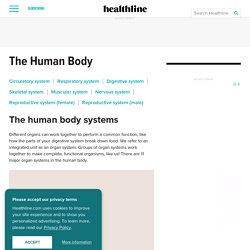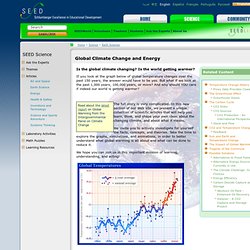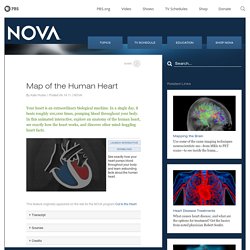

Lesson 1: Food Web Dynamics. Forces activity. Dichotomous key classification. Plant Identification Game Using an Online Interactive Dichotomous Key Introduction: By looking at characteristics of a plant or animal and using a dichotomous key, you can identify most living things to the species.

In this situation the term "dichotomous" means to divide into two groups that are not alike and most dichotomous keys work by using the individuals characteristics to place the organism into smaller and smaller groups until it can be identified to the species. Dichotomous keys usually include only certain groups of organisms, like trees or butterflies. The usefulness of a key is only as good as the author's purpose. This game is intended to introduce you to how a dichotomous key is used.
How to play: To begin, choose one of the plant buttons below to open a photo in a new window. Water Cycle - Animated Diagram. Continental Drift: Interactive Animation. Carbon Footprint calculator. Solar System Scope. Human Body Maps. Different organs can work together to perform a common function, like how the parts of your digestive system break down food.

We refer to an integrated unit as an organ system. Groups of organ systems work together to make complete, functional organisms, like us! There are 11 major organ systems in the human body. The circulatory system is a body-wide network of blood, blood vessels, and lymph. Powered by the heart, it is the body’s distribution system to organs with oxygen, hormones and essential nutrients that helps it function properly.
Learn more about these body parts in the circulatory system: Every tissue within the body requires oxygen to function. Learn more about these body parts in the respiratory system: The skeletal system gives the body its basic framework, providing structure, protection, and movement. The nervous system allows us to perceive, comprehend, and respond to the world around us. Global Climate Change. Is the global climate changing?

Is the world getting warmer? If you look at the graph below of global temperature changes over the past 150 years, the answer would have to be yes. But what if we look at the past 1,000 years, 100,000 years, or more? And why should YOU care if indeed our world is getting warmer? The full story is very complicated. We invite you to actively investigate for yourself the facts, concepts, and theories. We hope you can join us in this important mission of learning, understanding, and acting! What do we know about the Earth's climate in the past? Let's start by examining Global Temperature History… How do we know what the temperature of the Earth was like thousands and millions of years ago when there were no thermometers? We can estimate temperature by other means. What determines global temperature? Genes and Appearance. In this activity, you will change the way a dragon looks by changing its genes.

Introduction How do genes determine appearance? As we all know, dragons are fictional animals, but they work well for learning genetics. Dragons have very few heritable traits, and most of those traits are controlled by single genes with a simple dominant-recessive pattern of inheritance. This makes dragons a great organism in which to study genetics. Dragons do have one example of incomplete dominance; their legs come in three varieties. Observe the dragons above (green, yellow, and purple) and describe the three leg varieties that result from incomplete dominance.
Standards NSES Life Science – Reproduction and Heredity Every organism requires a set of instructions for specifying its traits. NSES Life Science – Reproduction and Heredity Hereditary information is contained in genes, located in the chromosomes of each cell. Procedure Collect Data I Model 115: Biologica Dragon Genetics. Diffusion and Osmosis lab.
Map of the Human Heart. Map of the Human Heart Day and night, the muscles of your heart contract and relax to pump blood throughout your body.

In the Step Thru below, see the complicated path the blood takes as it moves in and out of the heart. Step Thru Animation Oxygen-poor blood (shown in blue) flows from the body into the right atrium. Blood flows through the right atrium into the right ventricle. Anatomy Do right and left seem backward? Aortasuperior vena cavaright atriuminferior vena cavapulmonary valvetricuspid valveright ventriclemitral valveleft ventriclepulmonary arteryaortic valveleft atrium Heart Facts Put your hand on your heart. Hold out your hand and make a fist. Give a tennis ball a good, hard squeeze.